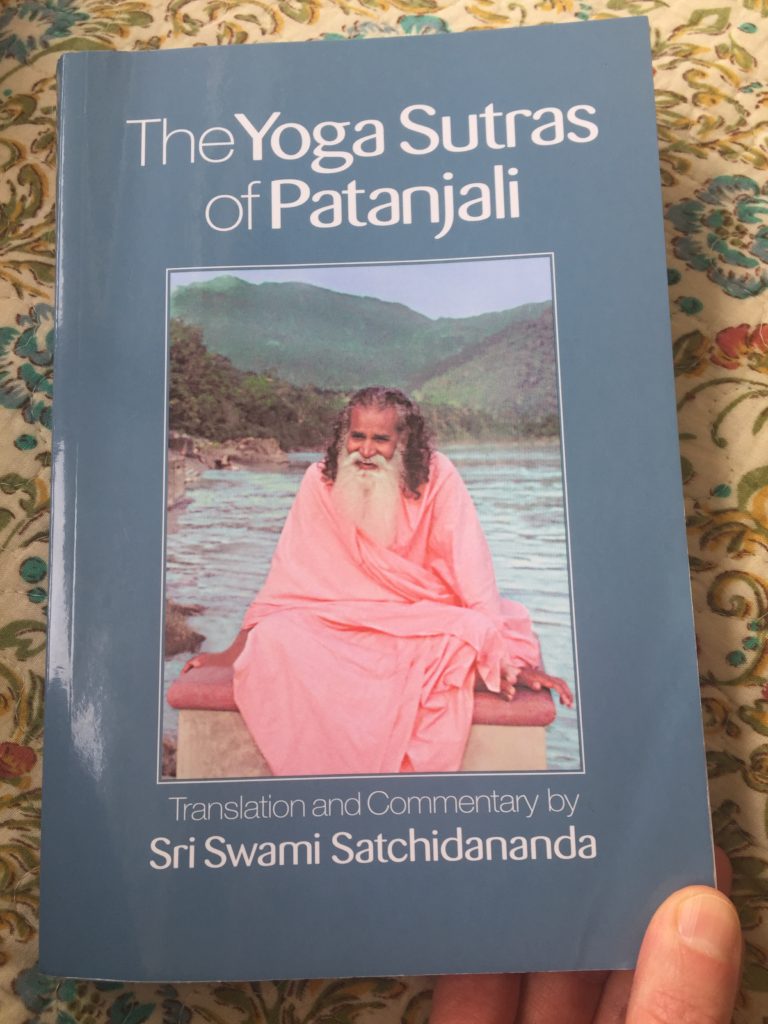This year, my calendar features the wisdom and calligraphy of Buddhist monk Thich Nhat Hanh. February’s page looks like this:

Beneath this beautiful calligraphy, we find the explanation that true love consists of:
- loving kindness (maitri in Sanskrit) – benevolence, friendliness, good will
- compassion (karuna) – the desire to help, to alleviate another’s suffering
- joy (mudita) – the unselfish delight in another’s well-being
- equanimity (upeksha) – even-mindedness, non-attachment, tolerance
“If your love contains these elements, it will be healing and transforming, and it will have the element of holiness in it” (Thich Nhat Hanh, from “How to love”). Every time I’ve passed my calendar this month, I’ve seen these words. Now, imagine my surprise when I opened my copy of The Yoga Sutras the other day and rediscovered this verse:

” 1.33 By cultivating attitudes of friendliness toward the happy, compassion for the unhappy, delight in the virtuous and disregard toward the wicked, the mind-stuff retains its undisturbed calmness. (p.51, bold added)
Even the Sanskrit in the original Sutra matches up with the writing in my calendar – there is maitri, karuna, mudita and upeksha!
Swami Satchidananda offers us a powerful commentary on this Sutra. He says we will encounter four kinds of people in the world – just four! – the happy, the unhappy, the virtuous, the wicked. “At any given moment, you can fit any person into one of these four categories” (p.51). And how do we best approach these people?
Have these four attitudes: friendliness, compassion, gladness and indifference. These four keys should always be with you in your pocket. If you use the right key with the right person you will retain your peace. Nothing in the world can upset you then. Remember, our goal is to keep a serene mind. (p.54)
Consider also that we have these four “people” within ourselves. There is an aspect of ourselves who is happy, an aspect who is unhappy, an aspect who is virtuous, and one who is prone to vice (anger, deception, greed, and so on). Different aspects emerge at different times. Seeing these parts of ourselves, and remembering these teachings, we can apply the “four keys” to our self. We can be friendly towards our happy self, and compassionate towards our unhappy self. We can delight in our virtues. We can be even-minded and unperturbed by our shortcomings. You could call this self-love. In this way, we heal our inner wounds, as the Buddhists teach… and we keep the mind steady and calm, as the yogis teach.
This reminds me of an article I read recently, “Letter to my Younger Self“, by Deion Sanders (pro football and baseball player). He talks about the various aspects of self we carry within, the different roles we play, and how we present different faces at different times, depending on the context. He concludes:
Think of it as The Last Supper. You’ll have all these different people sitting at the table – all these different versions of yourself and roles that you’ll play – and they’ll all be talking, trying to get a word in, trying to be heard. And there’s nothing wrong with that. As long as you have the right person sitting at the head of the table.
And who’s that “right person”? Well, from a yogic perspective, we could say it’s the Witness within, the Seer – the One who sees it all, who observes the inner dialogues and emotions, and yet remains untouched by it. This One is the very source of clarity, wisdom, and love. Some call this God; some call it the True Self. There are many names for this One. The yogis would say that it doesn’t matter what name you choose, as long as this One is at the head of the table, overlooking and smiling upon the scene unfolding before its eyes.
At any given time, we can sit in any of these seats at the table. We can play any of the characters that reside within us… but can we be the Witness? The teachings and practices of yoga show us how.
On another note… For next week’s News & Inspirations, I plan to write about a yoga posture. Any requests?

Delightfully and pragmatically contemplative thoughts… Thanks for sharing Zofia. Trying to focus on pose of ‘Reclining Crescent Moon ‘
Thank you, Scot, for the feedback and also for ideas for next week’s post 🙂 Yes, reclining crescent moon…